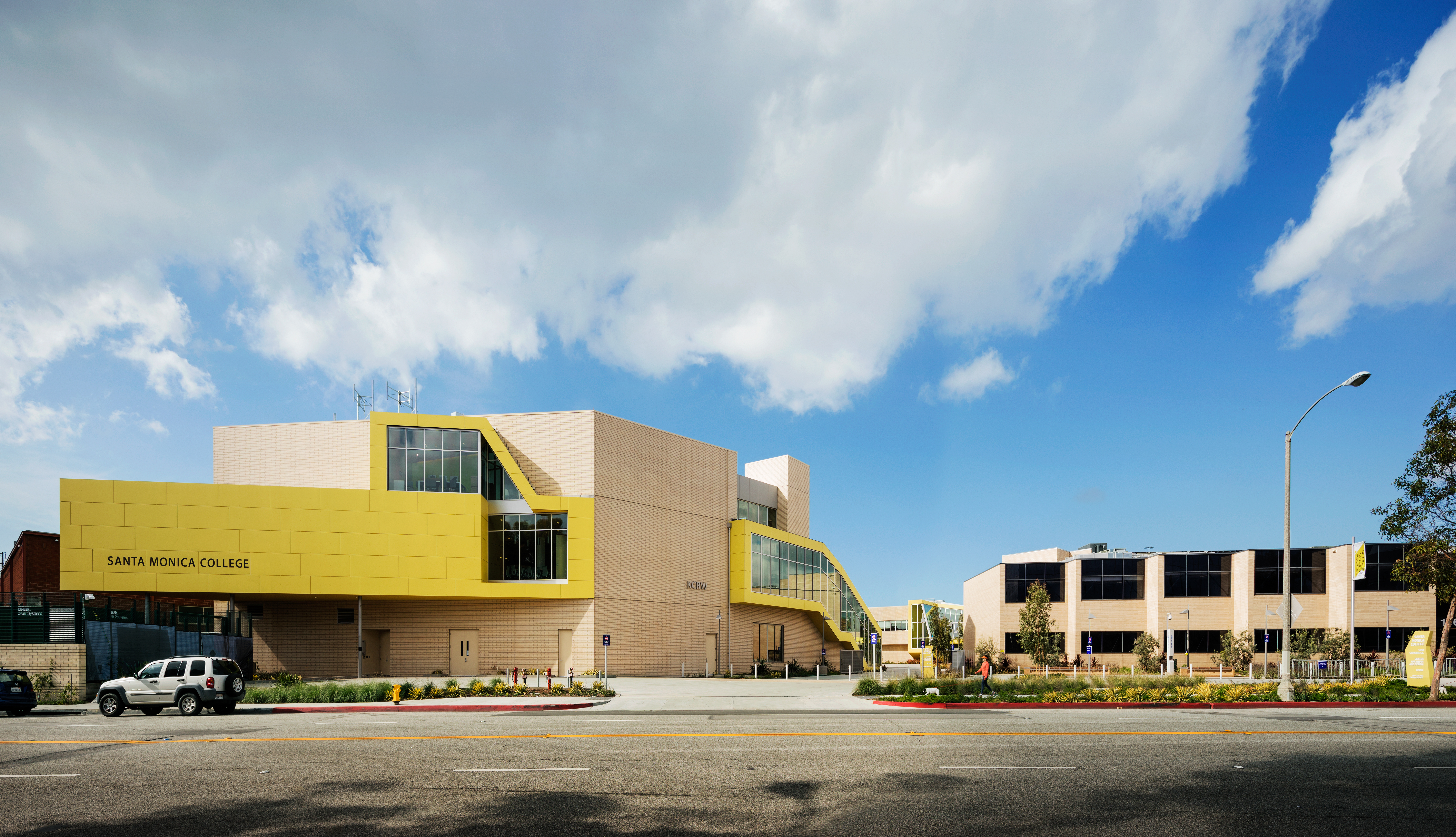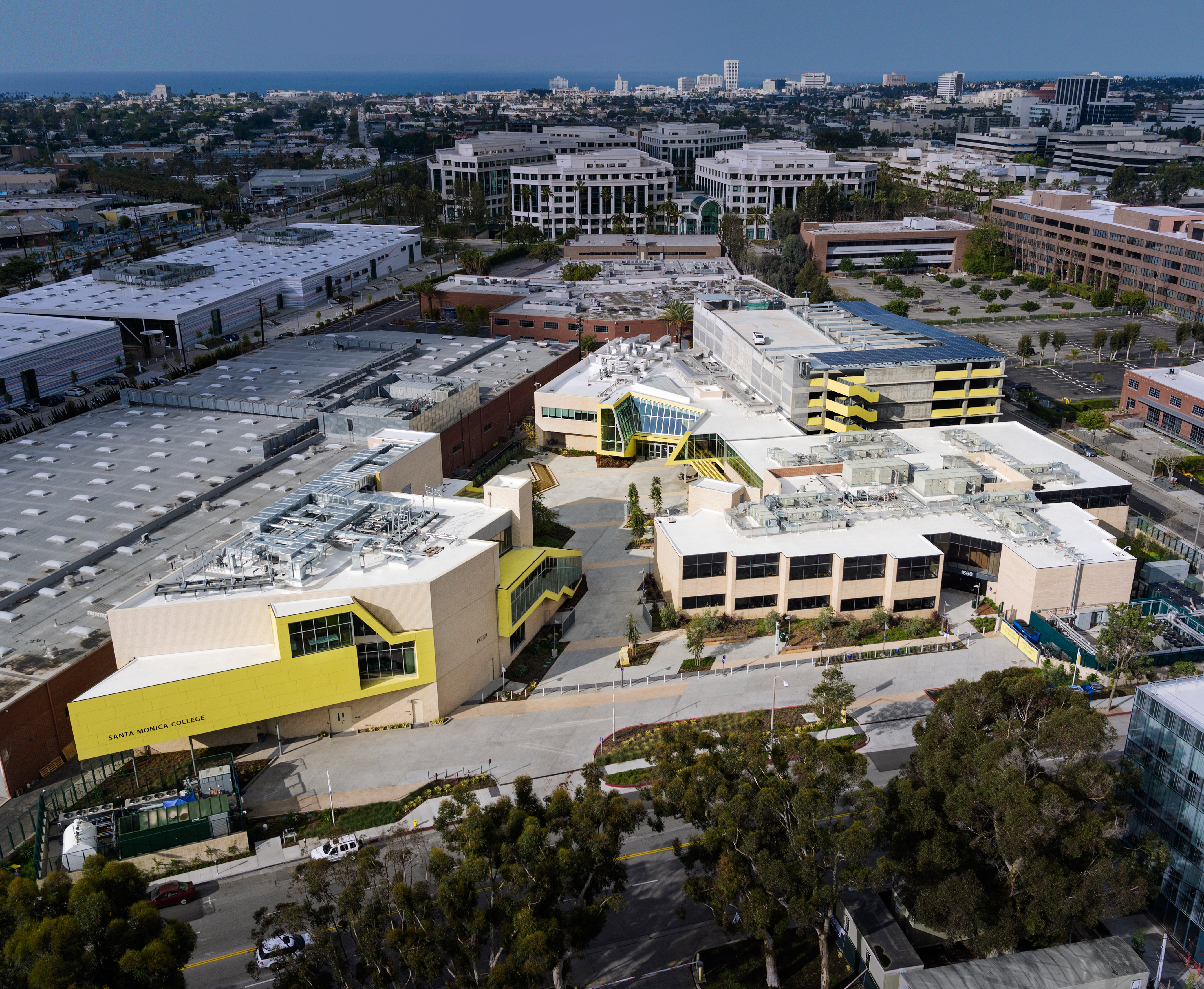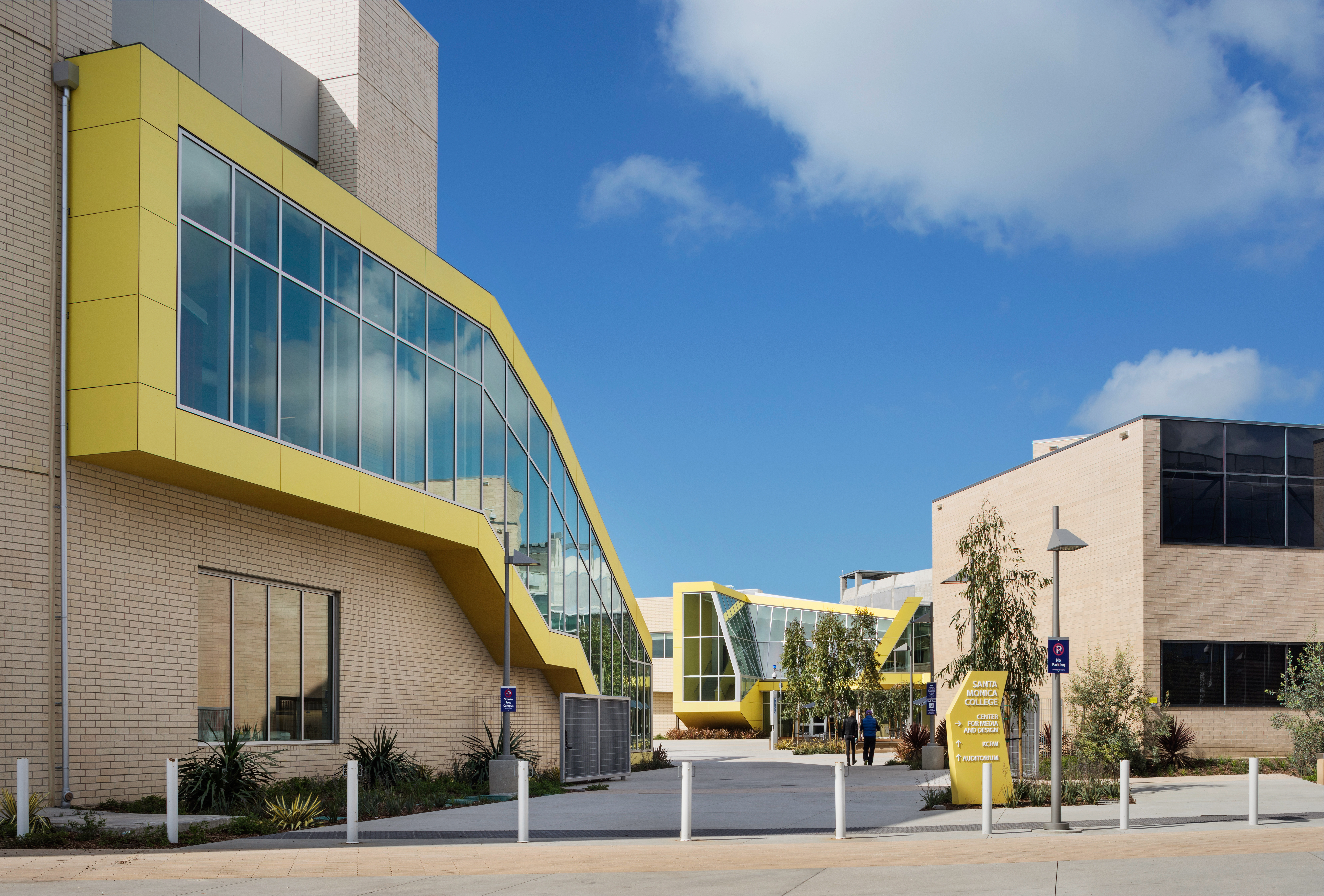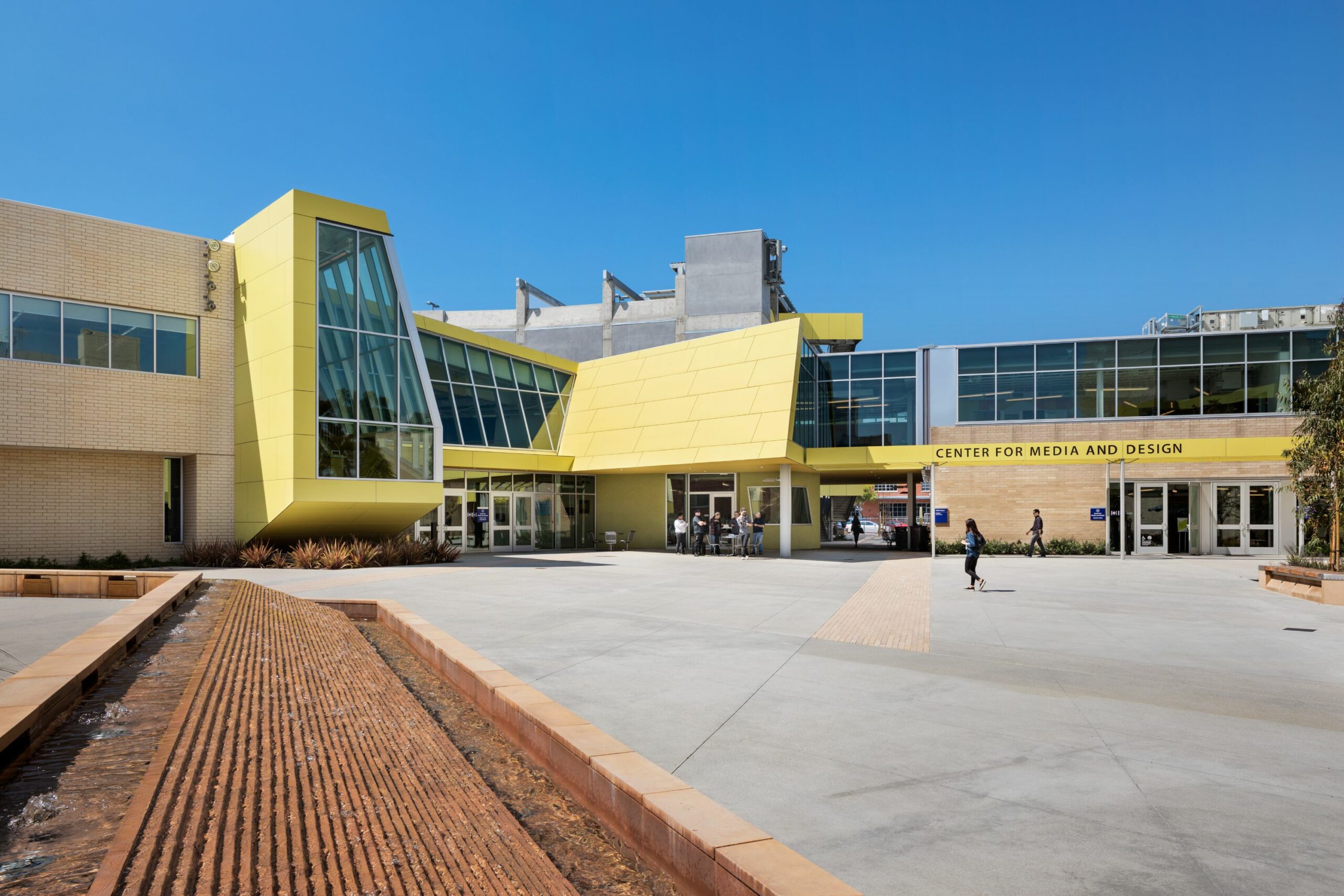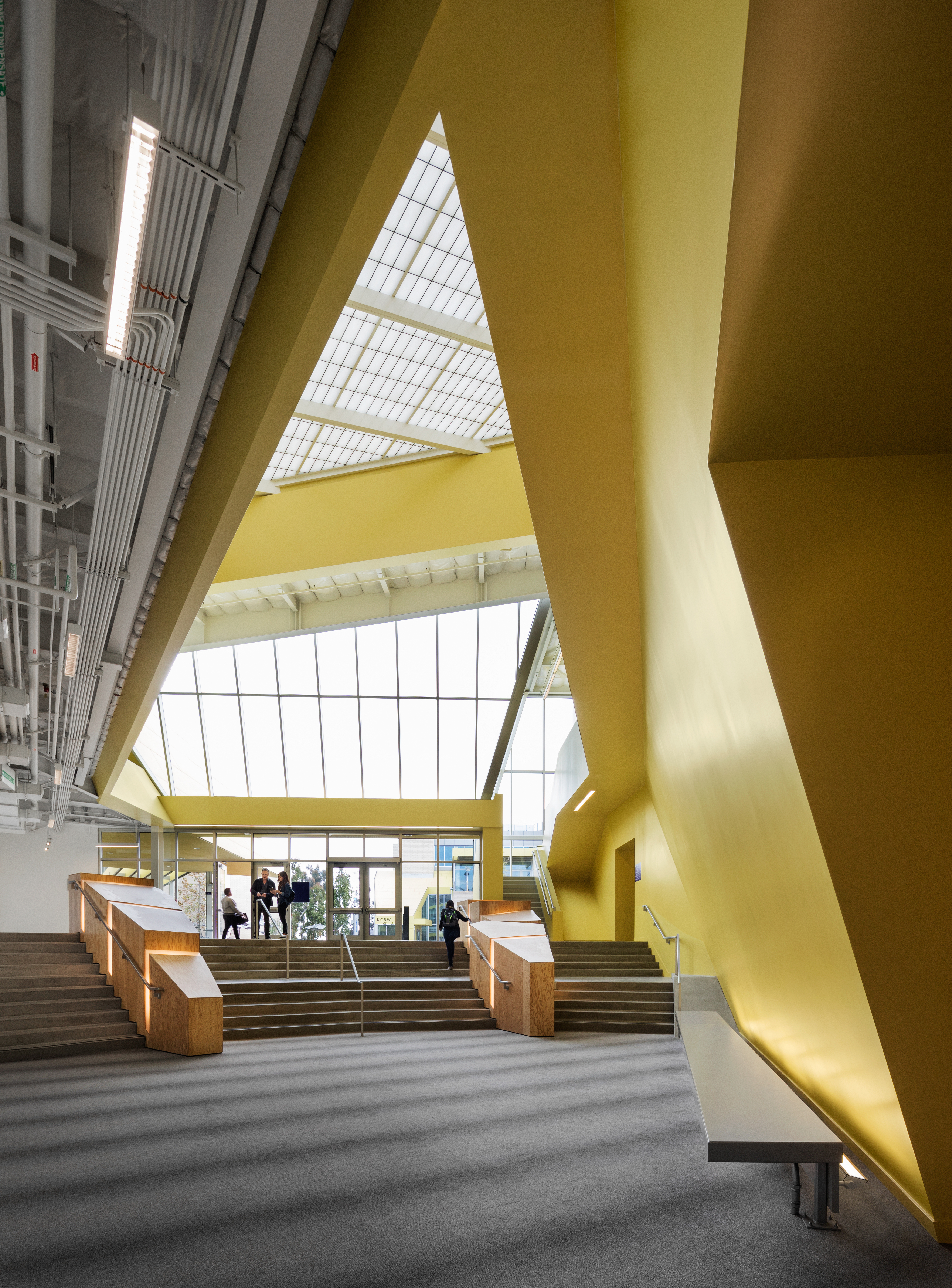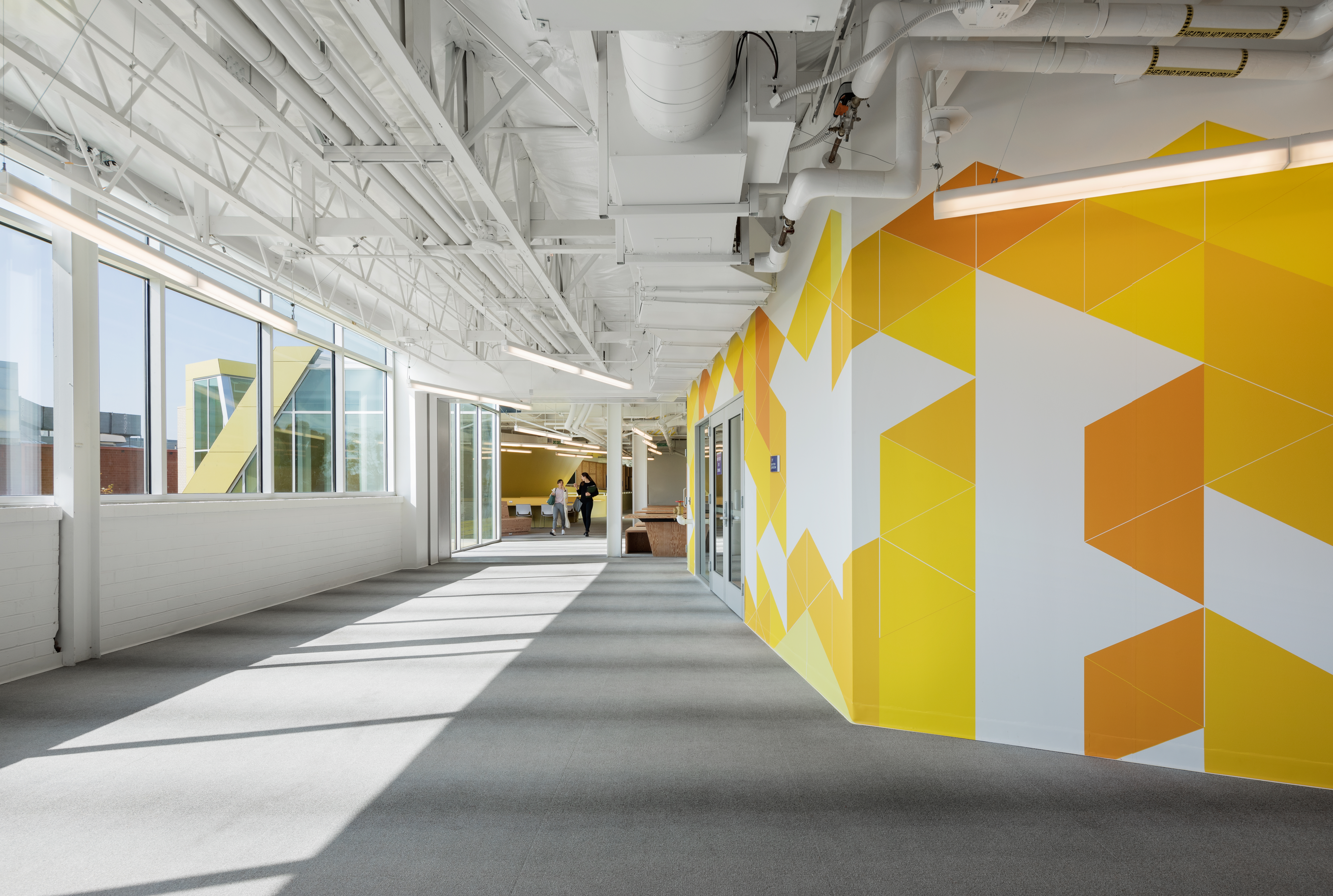SANTA MONICA COLLEGE CENTER FOR MEDIA AND DESIGN
Santa Monica, California, USA
Date
2018
Category
EducationAbout This Project
Scope: Renovation, Base Build, Interiors
Campus: 115,000 SF
Renovation: 49,000 SF
Addition: 32,000 SF
Photos: Michael Moran
The Santa Monica College (SMC) Center for Media and Design (CMD) is a renovation and expansion of the school’s old Academy of Entertainment & Technology. The 3.5-acre project includes the renovation of an existing 50,000-square-foot teaching facility and construction of a 30,000-square-foot instructional wing; a new, three-story building for KCRW, a beloved public radio station licensed to the school; and a new, seven-level parking structure. A beautiful 18,000-square-foot courtyard with water features and an outdoor performance stage is showcased in the center of the complex. Located in ‘Silicon Beach’—home to major media firms and over 500 tech startups—the CMD enables the school to finally unite all of their programs focused on media content development and design on one campus.
Our design process began with an intensive period of curriculum analysis, classroom visits, facility tours, client workshops, and visioning sessions. Early on, it became clear that the Client considered instructional education alone insufficient preparation for a world in constant flux. It has become increasingly difficult for students to apply academic knowledge in professional settings, and few institutions are truly committed to breaking down the schism between education and the workplace. However, Santa Monica College and KCRW came to us with precisely this design challenge. The new campus that resulted is a symbiotic experiment in co-locating a media education program and a professional broadcasting organization to maximize the collateral benefits between the two renowned institutions.
After several weeks of visioning with SMC, the Design Team determined that the fundamental idea uniting the CMD and KCRW is storytelling. Together, we envisioned this project as presaging a future educational model, one that leverages the possibilities of new media as a clarifying agent to shape the complex narratives of the world into a meaningful story. Thus, we set out to create architecture that acts as a narrative vehicle, shaping the campus into a sequence of experiences that showcase education as a progressive cycle. The three buildings and the central courtyard embody a student’s progression from higher education to the professional world.

